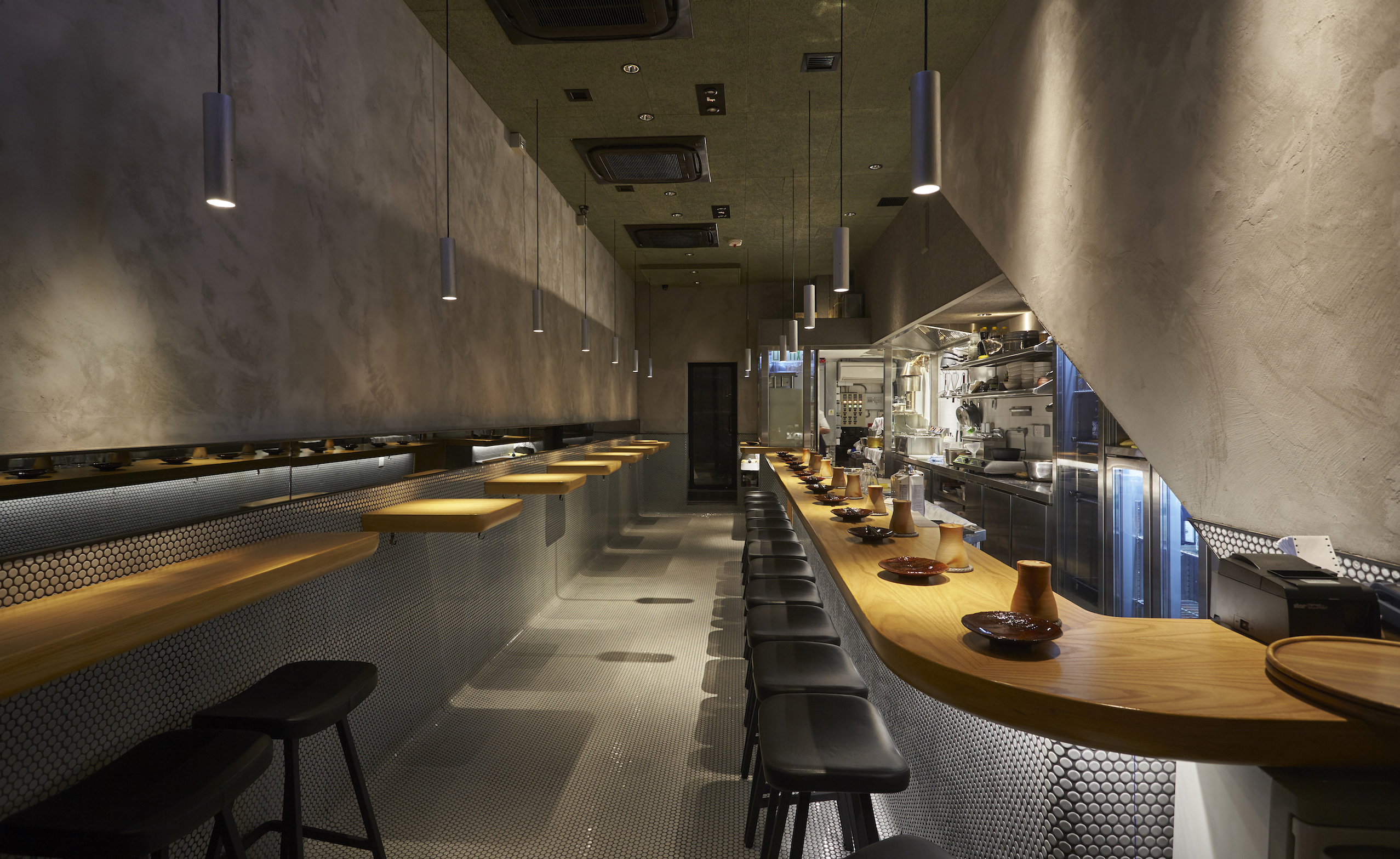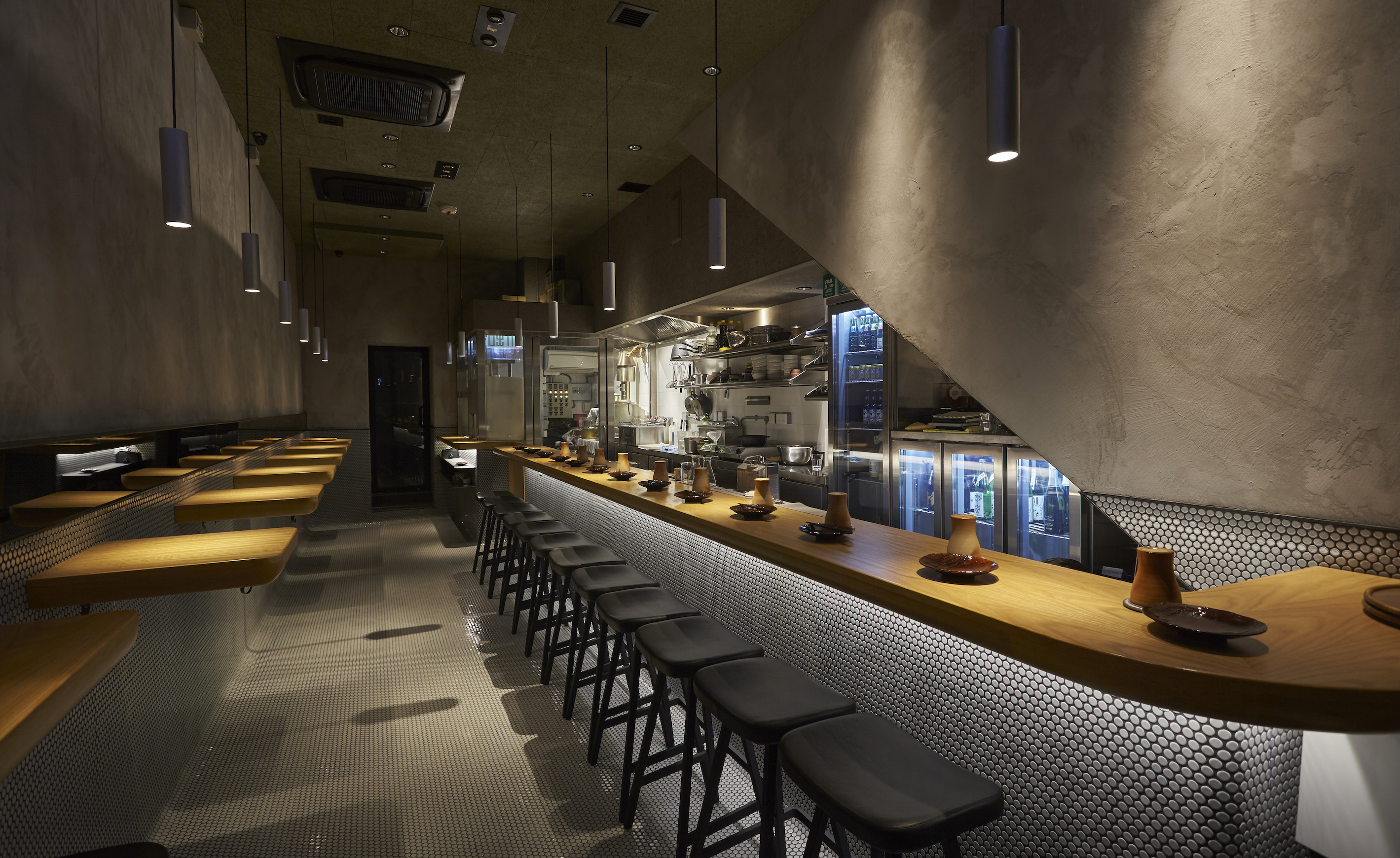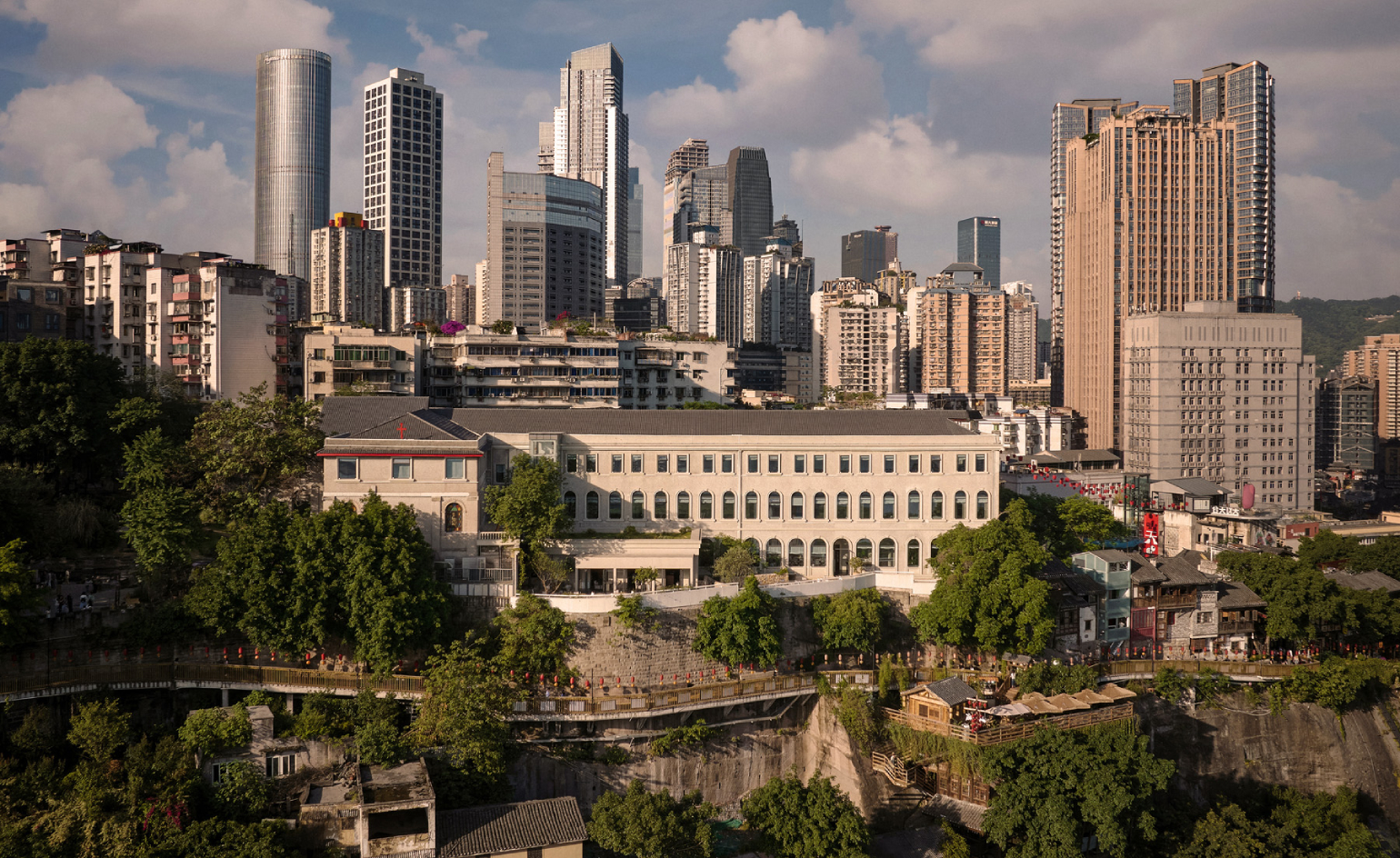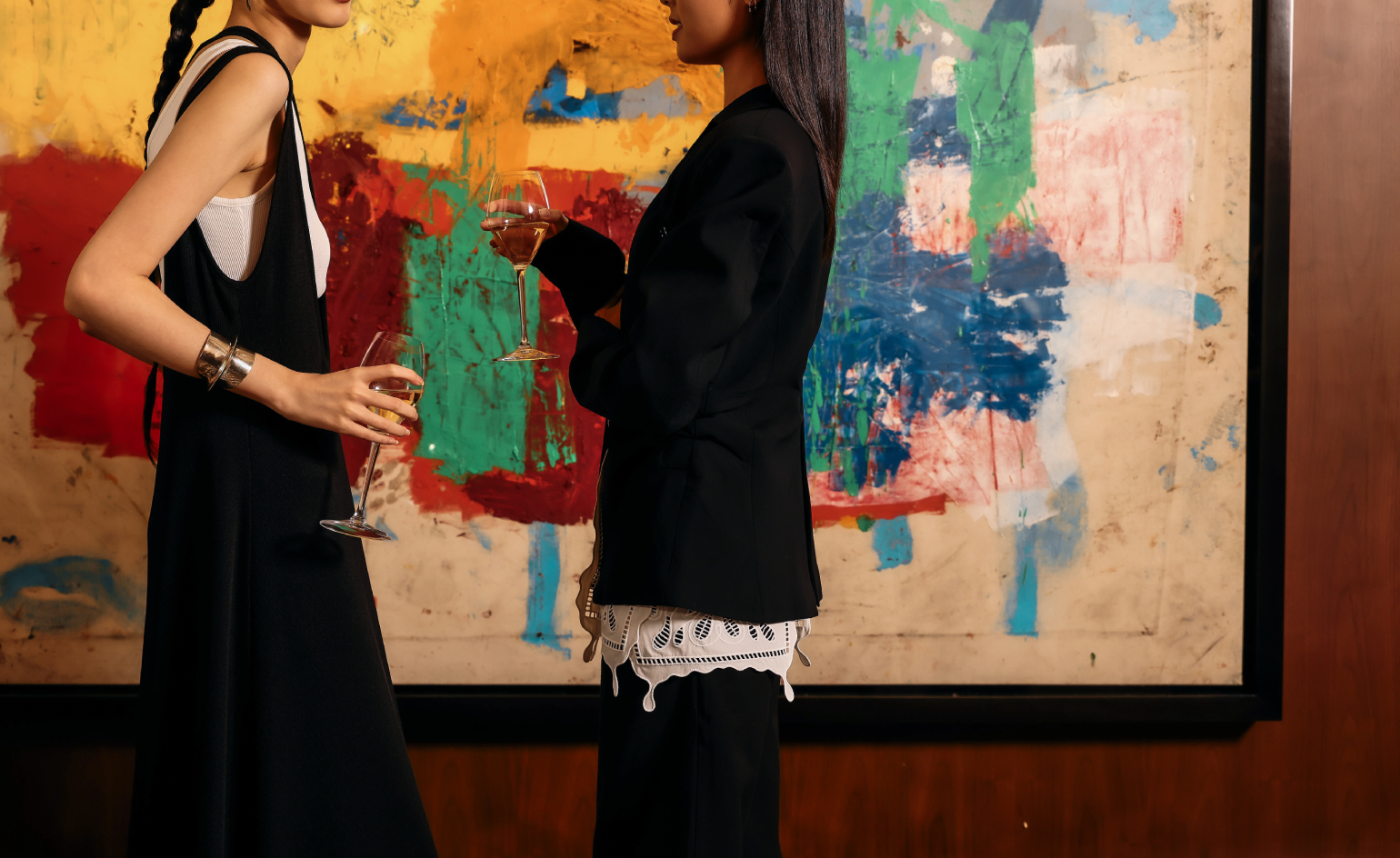
When Max Levy – the man behind Beijing’s Okra 1949 – was looking for a spot for his new venture Okra Hong Kong, he narrowed his search down to the Sai Ying Pun neighbourhood. ‘We didn’t want a location that’s going to get commercial too fast,’ says the New Orleans-native, by way of explaining why he settled for the four-storey building built in 1852 that rubs shoulders with contemporary art galleries, Buddhist incense shops and traditional herbalists.
Working with the interior designer Sean Dix, Levy, who also runs the kitchen, has kept the narrow interiors spare, with warm timber table tops and just 12 bar seats and six standing tables that front the open kitchen. Stretching along the length of the restaurant is an eye-catching Toshio Saeki mural.
The MO here is firmly tachinomi, which explains the paucity of seats. All the better to enjoy Levy’s Japanese slash modern small-plates menu. The combinations are intriguing – wild Sicilian seaweed tossed with soy salt and dashi jelly; smoked anchovies with salted Buddha’s Hand fruit, tofu skin and shiso; and Black Angus prime chuck seasoned with burnt olive oil.
Pair it all with an impressive list of sake that’s headlined by a five-year-old Wakatakeya Genrokshu Junmai Koshu.


INFORMATION
ADDRESS
Receive our daily digest of inspiration, escapism and design stories from around the world direct to your inbox.
110 Queen’s Road West
Daven Wu is the Singapore Editor at Wallpaper*. A former corporate lawyer, he has been covering Singapore and the neighbouring South-East Asian region since 1999, writing extensively about architecture, design, and travel for both the magazine and website. He is also the City Editor for the Phaidon Wallpaper* City Guide to Singapore.
-
 This modern Clapham house is nestled indulgently into its garden
This modern Clapham house is nestled indulgently into its gardenA Clapham house keeps a low profile in South London, at once merging with its environment and making a bold, modern statement; we revisit a story from the Wallpaper* archives
-
 The new Tudor Ranger watches master perfectly executed simplicity
The new Tudor Ranger watches master perfectly executed simplicityThe Tudor Ranger watches look back to the 1960s for a clean and legible design
-
 This late-night hangout brings back 1970s glam to LA’s Sunset Boulevard
This late-night hangout brings back 1970s glam to LA’s Sunset BoulevardGalerie On Sunset is primed for strong drinks, shared plates, live music, and long nights
-
 Five travel destinations to have on your radar in 2026
Five travel destinations to have on your radar in 2026The cultural heavyweights worth building an itinerary around as culture and creativity come together in powerful new ways
-
 Tour Peridot, Hong Kong’s hypnotic new bar
Tour Peridot, Hong Kong’s hypnotic new barLocated on the 38th floor of The Henderson, Studio Paolo Ferrari’s latest project is a study in ‘light, refraction, and intimacy’
-
 A discreet bolthole adds historic charm to Chongqing’s skyscraper jumble
A discreet bolthole adds historic charm to Chongqing’s skyscraper jumbleWith a landscape bristling with gleaming towers, Sunyata Ren’ai Hall Hotel quietly emerges as the Chinese city’s most design-forward stay
-
 Rosewood is searching for the next generation of women leaders
Rosewood is searching for the next generation of women leadersThe Rosewood Foundation introduces ‘Rise to the Table,’ a fully sponsored initiative aimed at addressing the gender gap in the food and beverage sector
-
 Discover a futuristic bar in Shanghai with mad-scientist energy
Discover a futuristic bar in Shanghai with mad-scientist energyPenicillin opens in Shanghai with a clinical steel and concrete design by LC Studio alongside trailblazing, sustainable cocktails
-
 A colossal ‘ship’ in Shanghai honours Louis Vuitton’s travel legacy
A colossal ‘ship’ in Shanghai honours Louis Vuitton’s travel legacyLouis Vuitton’s The Louis is an OMA-designed hub combining retail, culture and dining in the heart of Nanjing West Road
-
 The Trip to Hong Kong: exploring a bold new capital of culture
The Trip to Hong Kong: exploring a bold new capital of cultureA resilient desire to shift perceptions yet preserve heritage is driving a new energy in Hong Kong as the next generation creates a bold new capital of culture
-
 Take off with the June 2025 Travel Issue of Wallpaper*
Take off with the June 2025 Travel Issue of Wallpaper*Head to Hong Kong, paint the town red in Las Vegas, reimagine room service, and make a splash in sizzling swimwear – the June issue is hot to globe-trot, on newsstands now